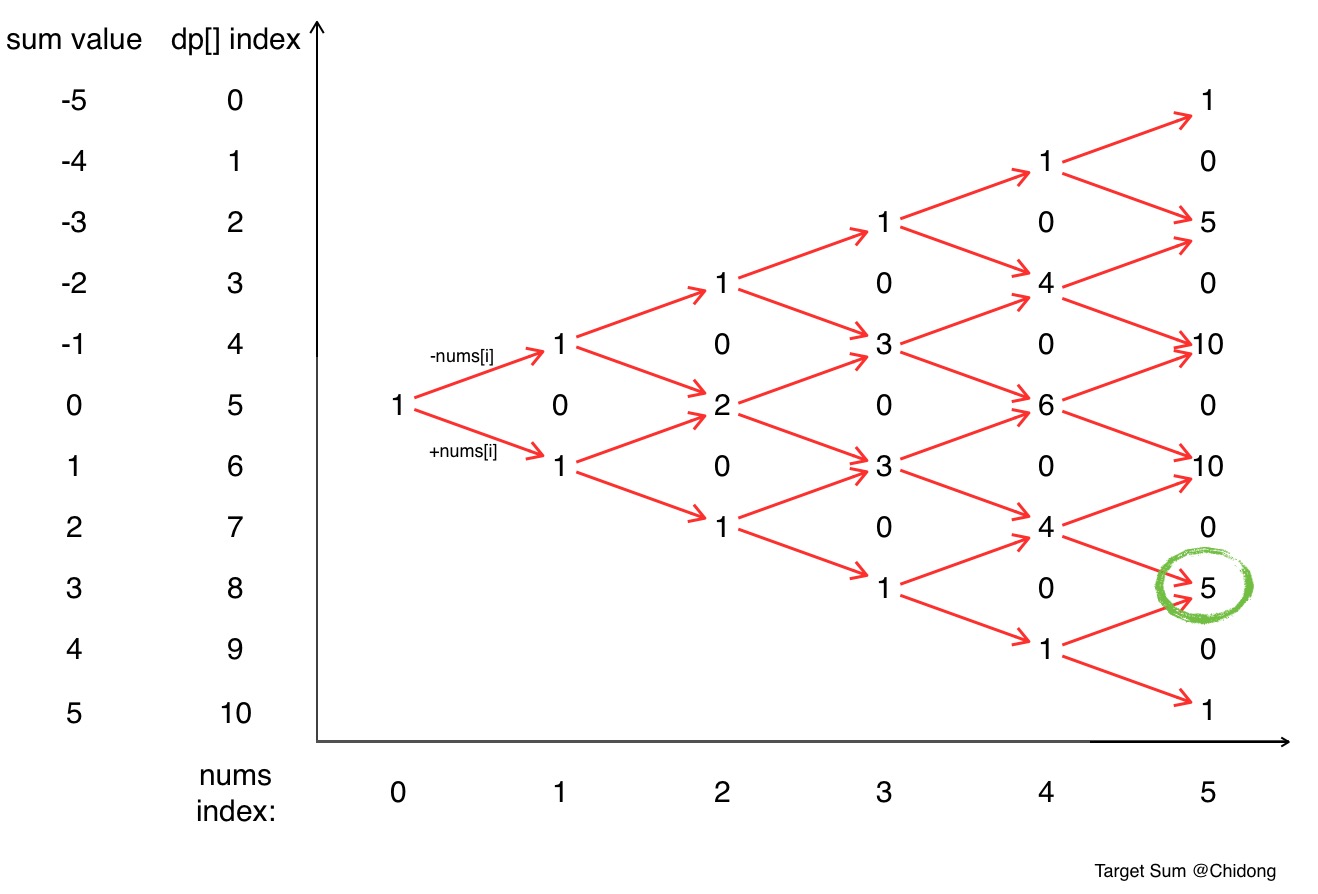- Total Accepted: 16739
- Total Submissions: 38242
- Difficulty: Medium
- Contributors:
You are given a list of non-negative integers, a1, a2, ..., an, and a target, S. Now you have 2 symbols + and -. For each integer, you should choose one from + and - as its new symbol.
Find out how many ways to assign symbols to make sum of integers equal to target S.
Example 1:
Input: nums is [1, 1, 1, 1, 1], S is 3. Output: 5 Explanation: -1+1+1+1+1 = 3 +1-1+1+1+1 = 3 +1+1-1+1+1 = 3 +1+1+1-1+1 = 3 +1+1+1+1-1 = 3 There are 5 ways to assign symbols to make the sum of nums be target 3.
Note:
- The length of the given array is positive and will not exceed 20.
- The sum of elements in the given array will not exceed 1000.
- Your output answer is guaranteed to be fitted in a 32-bit integer.
解题思路:
对于一个数组nums,在增加加号或者减号之后他的和值范围是 [-sum(nums), sum(nums)]。对于nums中的每一个数,都有加和减两种选择。得到的这两个结果再加或者减第二个数,又有4个结果。用dp[i + sum(nums)] 来记录每次操作之后使得和为i的方法数,经过一轮操作后dp[S+sum(nums)] 就是答案。

代码:
class Solution {
public:
int findTargetSumWays(vector<int>& nums, int S) {
int sum = 0;
for(int i = 0; i < nums.size(); i++)
sum += nums[i];
if(S > sum || S < -sum || (S+sum)%2 != 0)
return 0;
int dp[2001] = {0};
dp[sum] = 1;
for(int i = 0; i < nums.size(); i++){
int next[2001] = {0};
for(int j = 0; j < 2 * sum + 1; j++){
if(dp[j] != 0){
next[j - nums[i]] += dp[j];
next[j + nums[i]] += dp[j];
}
}
for(int j = 0; j < 2 * sum + 1; j++)
dp[j] = next[j];
}
return dp[sum + S];
}
};





















 2894
2894

 被折叠的 条评论
为什么被折叠?
被折叠的 条评论
为什么被折叠?








